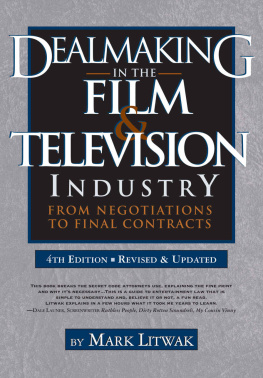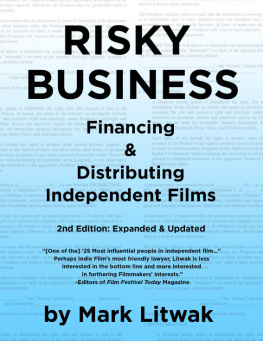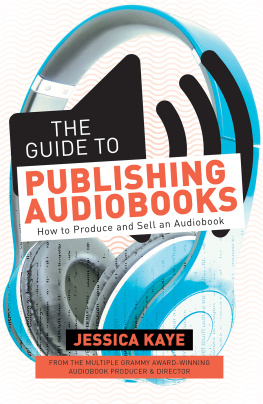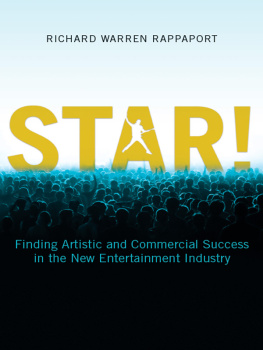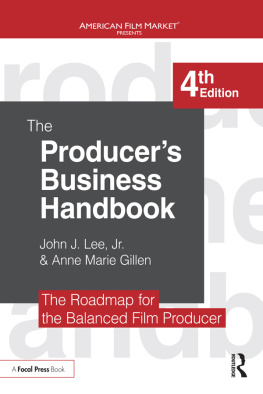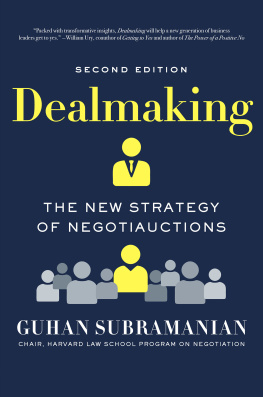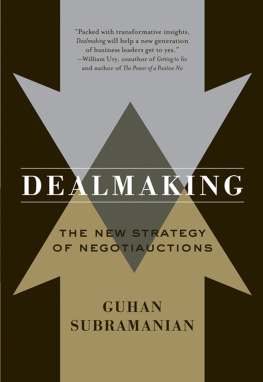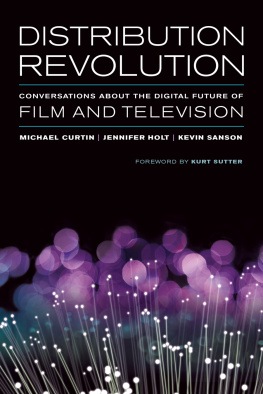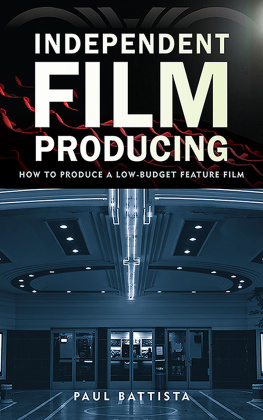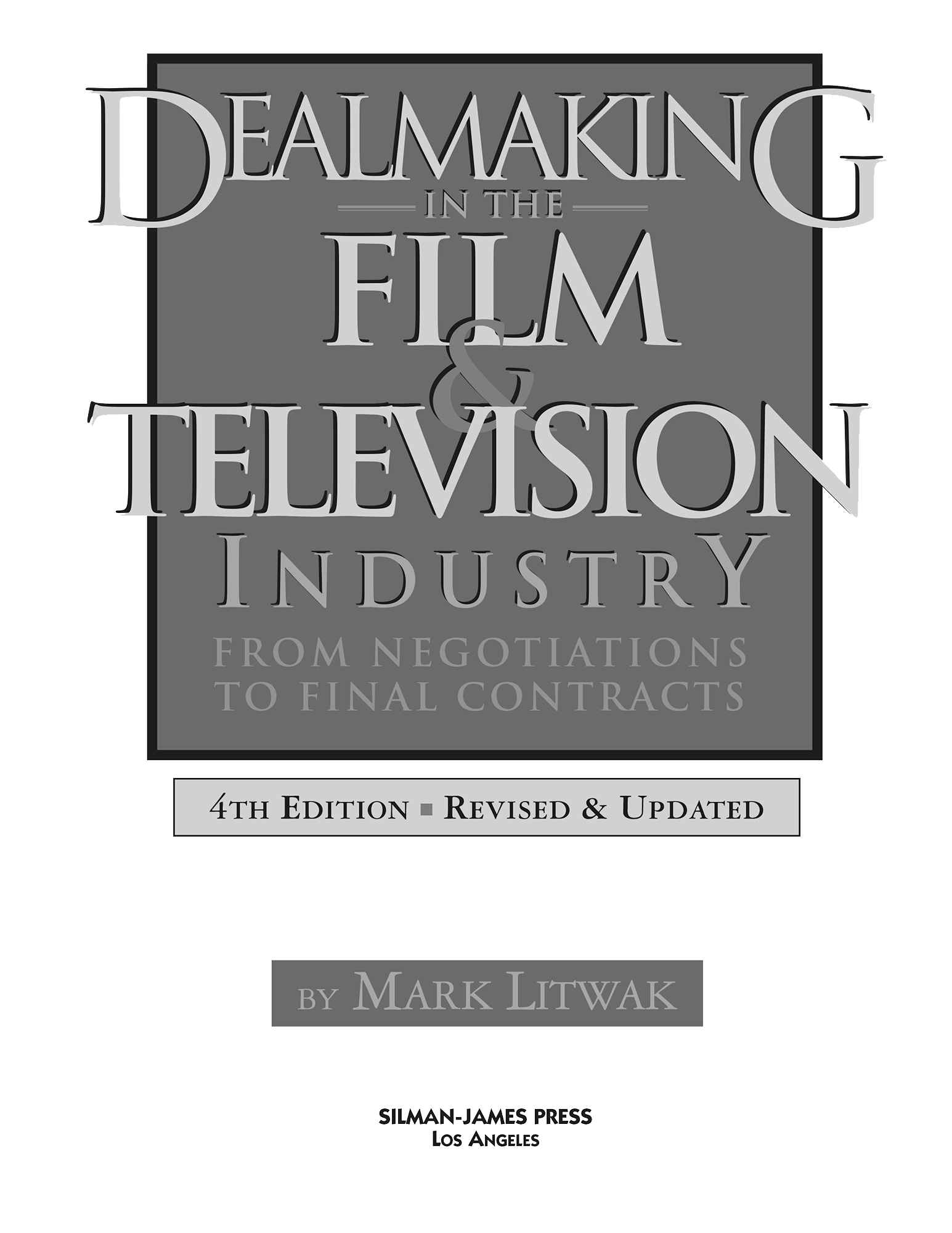I am grateful for the assistance of Phil Hacker, Tiiu Lukk, Gary Salt, and Lon Sobel for reading and critiquing early drafts of this work, and to Shannon C. Hensley, Esq., for editing the Second Edition. Thanks also to Elizabeth Zook, Ryan Pastorek, Chrys Wu, Jessica Dubick, Cyndie Chang, Lawrence Young, and Danielle Casselman for checking case citations and facts. For several editions, I was greatly assisted by my longtime associate, attorney Elizabeth Zook.
My thanks to Elliott Williams at the Directors Guild of America, Grace Reiner at the Writers Guild, and Vicki Shapiro at the Screen Actors Guild, for reviewing portions of the chapters pertaining to their members and guild rules.
I am also indebted to my publishers, Gwen Feldman and Jim Fox, for their helpful suggestions. They have also published several other books of mine, including Contracts for the Film and Television Industry .
PREFACE TO THE FOURTH EDITION
After the publication of my book Reel Power in 1986, I was invited to lecture at many universities in the United States and abroad. On numerous occasions I was asked to recommend a guide to entertainment legal issues. I was not able to recommend such a guide because I did not know of one.
While there are several texts on entertainment law, most are not addressed to the general reader. Many of these books are written by entertainment lawyers for other lawyers and are confusing, if not impenetrable, for everyone else.
Eventually I resolved to write a laypersons guide to entertainment law, and this is that book. I have attempted to explain complex legal ideas as simply as possible, avoiding jargon and explaining terms of art. I have taken a practical, problem-solving approach, rather than exploring theoretical issues of interest to academicians.
Of course there is a danger in trying to simplify complex information. Important exceptions and qualifications may be overlooked. The unwary reader may be misled into thinking he knows more than he does. It is well to recall the maxim that a little knowledge can be dangerous. So I caution readers to consult an experienced entertainment lawyer before making decisions with legal ramifications.
While this book is not a substitute for consulting an attorney, it does familiarize the reader with entertainment law and industry practice. It will impart to the neophyte some wisdom of showbiz veterans, enabling newcomers to protect themselves from exploitation as they learn to become savvy dealmakers.
Moreover, this guide can save readers thousands of dollars in legal fees. Entertainment attorneys generally charge $300 to $500 an hour for their time. Armed with this guide, laypeople wont need to ask their attorney to explain basic legal concepts and common deal structures. The lawyer and client can work more efficiently. Moreover, as the reader becomes more knowledgeable about his rights, he can take measures to prevent legal problems from arising in the first place.
This book was first published in 1994 and won the 1995 Kraszna-Krausz Foundation Moving Image Book Award for the best book on the business of the film industry.
The book has been updated several times, and now for the Fourth Edition I have added new materials to address the changes occurring in the movie industry, such as the growth of new media outlets like Netflix and YouTube.
I welcome comments and suggestions from readers. Additional information is available on my website, www.marklitwak.com . You can contact me at: Law Offices of Mark Litwak & Associates, email: law2@marklitwak.com, phone (310) 859-9595.
I hope this guide will prove useful to you.
Mark Litwak
September 2016
CHAPTER 1
INTRODUCTION
Before delving into the details of dealmaking, it is important for the reader to understand the context in which deals are made and the motivation of the players. Shrewd dealmakers know how to structure a deal to meet the needs, often unspoken, of all the parties.
Here follows background information on the social, legal, and technological forces that have influenced, and continue to influence, the industry. Readers can gain additional insight by reading the books in the recommended reading list in the Appendix.
The American Film Industry
The United States motion picture and television industry is a uniquely successful enterprise. In those countries that allow American films to be freely exhibited, they usually dominate the marketplace. Hollywoods films succeed in the world to an extent unrivaled by other American products. The U.S. film entertainment sector enjoys a trade surplus of $16.4 billion.
While it may be difficult for many American manufacturers to compete with low-cost goods manufactured abroad, American movies dominate the world market.

